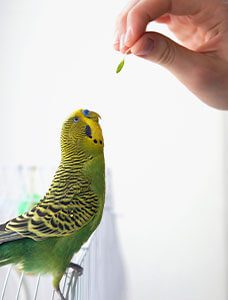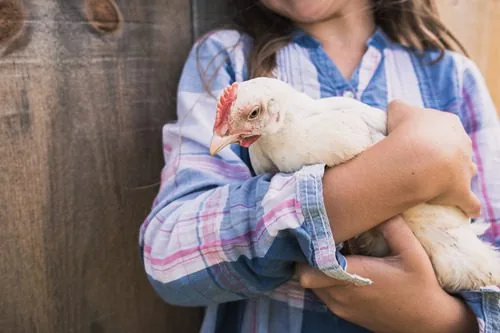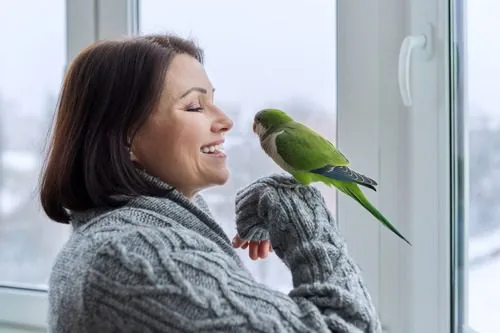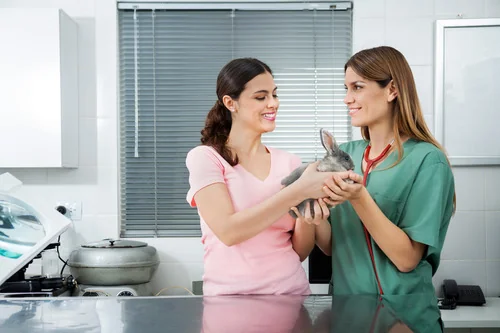How Do I Train My Pet Bird in Mandeville, LA?
Training a bird might seem like a magical feat- people don’t view them the same way they view dogs- but the truth is, the same basic principles apply. Positivity. Rewards. Time. Repetition. Find out more below about these basic principles on pet bird training for your Mandeville, LA, feathered friend.
Positivity
Whether you’re potty training your child, onboarding a new staff member at work, teaching your dog to sit, or training your bird to step up, it’s important to be POSITIVE through the whole experience. This is termed ‘Positive Reinforcement Training’.
Studies have shown that negative or aversive training is far less effective, and can have life-long detrimental effects on anyone who is on the receiving end of it. Make the first learned behavior easy. Once you bird learns he/she can get rewards by performing a task, it will be more willing to keep learning.
A Quiet and Comfy Place
When training your bird, make sure you and your friend are in a quiet, relaxed environment that is free of distractions. Keep your voice happy and energetic though the training session. Take breaks when you or your bird get frustrated or don’t seem to be communicating well.
Turn on the Tunes
You could even play soothing music to help set the tone for the session- Something lighthearted will help reduce stress for you and your bird.
Simmer Down, Now
It’s also important to remain calm. As much as you might want to squeal and shout whenever your pet does something good, sometimes that can be overwhelming and distracting- Birds don’t communicate the way we do, so loud vocalization might be interpreted as an aggressive interaction, and might just undo what you’ve just taught.
Verbalize each Command
Your bird needs verbal commands to learn what you are trying to teach. When you want your bird to step up, ALWAYS say the words ‘Step Up’ when teaching the behavior. Eventually he/she will learn that presentation of your hand or finger will mean ‘Step Up’.
 Rewards
Rewards
Rewards are extremely important for any kind of pet bird training. It’s not just an exchange (good behavior gets a reward), it perpetuates that positive tone you’ve set. You’ll be happy and your bird will be motivated.
Treats
Treats are the most common way to reward desired behavior. When deciding on a treat, focus on offering something your bird doesn’t get every day. Special treats, or “high value rewards”, are extra-motivating, so your bird will be more likely to focus entirely on you, and repeat the rewarded behavior.
Make sure treat pieces are small, and easy to consume quickly. If you give a bird an entire nut to munch on as a reward, those few minutes of treat eating could be too distracting, and wipe out any training that just preceded it. It should also be stressed that treats should have a beneficial nutritional value. Items such as slices of almonds, slices of carrots or apples and make for an excellent reward treat. Nutriberries can also be used for rewarding positive behavior.
Toys
Another reward option, is brief and exciting interaction with a favorite toy. Working dogs trained by police are often rewarded for desired behavior using a ball or other small but exciting toy. The same concept can be used for birds. Try using a little bell, or a ball they can grab and shake.
Time
Time is an important consideration for training for three reasons:
Training Can’t Be Rushed
You should create a training routine that you can commit to, where sessions occur on an almost daily basis. You should also expect the whole training process to take weeks, months, and even years to perfect. Teaching doesn’t happen overnight.
Depending on your bird, their life expectancy could be anywhere from twenty to eighty years. The current average lifespan of humans is 79 years. Between grade school and post-secondary education, we spend nearly 25% of our lives being taught. If we afforded the same education to our birds, we could expect to give them five to twenty years of learning time.
Training Needs to Be Consistent
When creating a training routine you can commit to, it should happen on as close to a daily basis as you can get. You don’t have to rearrange your entire life, but you do need to make sure there’s no more than a day or two between trainings, or your progress will be slow, and you might see frequent relapses.
Training Sessions Can’t Be Too Long
If your training sessions are too long it can become overwhelming and frustrating, and they won’t retain everything you’re trying to teach. Try to keep training sessions no longer than 20-30 minutes.
Repetition
Repetition is an important training concept in both the long and short term.
Short Term Benefits
Repetition is what helps your bird learn the desired behavior. Repeat all the steps it took to elicit the desired behavior, and reward every time the desired result is achieved. Every time you have a training session, revisit that behavior and then build on it.
Long Term Benefits
Repetition is what continues reinforcing the desired behavior. Just as you continue to have your dog “sit” and “stay” on at least a daily basis, if you want your bird to remember the desired behavior, make sure they have to perform it as part of their daily routine.
What Are Some Things I Can Teach My Pet Bird?
As with children, dogs, cats, and new coworkers, you’ve got to start with the basics. Teach them what they “need” to know first, and then progress to the fun things.
Step Up
The most basic thing to teach, is “Step Up”. This redirects natural perching behavior in such a way that the bird becomes accustomed to perching on your finger, hand, or forearm. It’s a fairly easy task to teach, considering they might do it naturally on their own. Even if it happens naturally, rewarding, repeating, and attaching the “Step Up” command can enhance the whole experience.
Come
You can also teach your bird to “Come” when prompted. This is especially helpful when your bird is in an unreachable place, like the back of their cage, or some corner of the house they’ve found their way into. This is where those high value rewards come in. Teach them that every time they respond appropriately to come, they get something great out of it. You’ll get to a point where a natural positive association has been drawn between “Come” and them actually coming to you, and you may get to a point where “bribery” is no longer necessary.
Returning to Cage
Returning to their cage is also incredibly useful, especially for stubborn birds who decline confinement in favor of more exciting activities. Every time you return them to their enclosure, turn it into a game. Every time they go in willingly, they get a treat or a toy. If they don’t go in willingly, make sure something inside the enclosure is worth more than staying out. When they respond well, take them out again, and repeat, until the behavior becomes more habitual.
More Info on Pet Bird Training in Mandeville, LA
To learn step-by-step training methods for these and other behaviors and tricks, consider checking out resources available from exotic animal professionals, veterinarians, and behaviorists. The Avian & Exotic Animal Hospital of Louisiana also has more information for you.
Recent Posts
About Avian & Exotic Animal Hospital of Louisiana
Avian & Exotic Animal Hospital of Louisiana, formally West Esplanade Veterinary Clinic, is Louisiana’s only veterinarian that provides care exclusively to avian and exotic pets. From parrots to rabbits and ferrets to a wide variety of reptiles, as well as a multitude of small mammal exotic pets, we welcome them all to our practice!

 Rewards
Rewards



